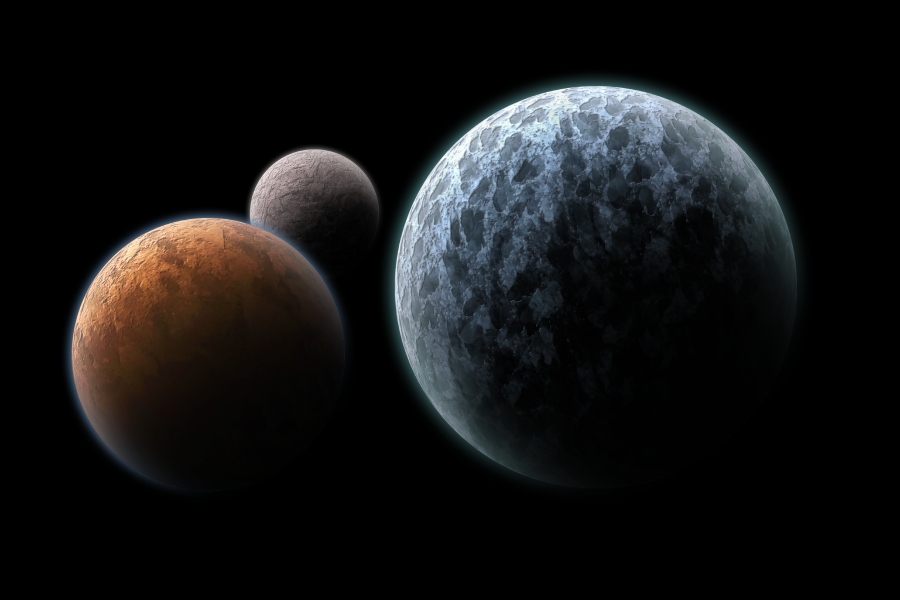Exoplanets, or planets outside our Solar System, have captivated our imagination. These distant worlds, orbiting stars beyond our Sun, have sparked the imagination of scientists and enthusiasts alike. But how many exoplanets are there?
We’ll examine the history of exoplanet discovery and explore scientists’ ingenious techniques to spot these distant worlds. We will also discuss how these detection tools open different windows onto planets circling faraway stars.
Let’s see some examples of exoplanets!

How Many Exoplanets Are There?
Through ongoing observations, astronomers have identified thousands of exoplanets, expanding our understanding of distant planetary systems. So, how many exoplanets have been discovered? As of now, there have been 5,576 confirmed exoplanets identified in 4,113 planetary systems.
This count is dynamic, with discoveries continually emerging. The exploration of these distant worlds offers valuable insights into the diversity of planetary systems beyond our solar neighborhood.
Types of Exoplanets
Gas Giants
Gas giants are large planets primarily composed of gases. Their proximity to stars exposes them to intense radiation and winds.
Cold gas giants, on the other hand, orbit farther away. They maintain cooler temperatures like gas giants in our Solar System. Moreover, the greater distance from their stars provides increased atmospheric stability. Despite variations in orbits and temperatures, both hot and cold gas giants share a common gas composition and lack solid surfaces.
Rocky Planets
Rocky planets boast solid silicate and metal surfaces, distinguished by their smaller size than gas giants. These planets possess thick atmospheres and experience intense tectonic activity.
Earth-sized planets share Earth’s dimensions, yet mere size doesn’t ensure habitability. In contrast, lava planets orbit near their stars, subjecting them to extreme heat that liquefies their surfaces into magma oceans.
Ice Giants
Ice giants are a type of exoplanet composed of volatiles like water, ammonia, and methane surrounding a rocky core. With masses between 5-15 times Earth’s, they are intermediate between terrestrial and gas giants.
These worlds have very cold atmospheres below -100°C where ice stays solid. Notable ice giant exoplanets include GJ 1214 b, a mini-Neptune 2.7 times Earth’s diameter. Also, there is OGLE-2005-BLG-390Lb, which is five times Earth’s mass, and HD 102195 b, estimated at 230 times.
Earth-Like Planets
Earth-like exoplanets have key qualities that make them potentially habitable. They are rocky planets with similar mass and diameter to Earth orbiting within the habitable zone. This provides liquid water, complex geochemistry, adequate energy, protective atmospheres, and long timescales needed for life.
Upcoming telescopes will target these worlds to study their atmospheres and surfaces closely to assess habitability. Discovering true Earth twins is an ultimate goal, as they give the best insights into life elsewhere.
Habitable Planets
Habitable exoplanets have liquid water, mild temperatures, protective atmospheres, and rocky chemistry needed for life. Assessing habitability involves studying their orbits, composition, atmospheres, age, and stellar environment.
Many exist in habitable zones, but the prevalence of suitable conditions for life is uncertain. Even if the odds are low, the total number with life could still be substantial.
What Is the Number of Exoplanets?
According to NASA’s Exoplanet Archive, over 5,000, or precisely 5,572 exoplanets have been confirmed since January 2024, which tracks all validated discoveries. This represents a small fraction of the billions of planets likely populating our galaxy.
The first exoplanet around a Sun-like star was found in 1989. By 2000, around 50 were confirmed, increasing to over 500 by 2010. The number has grown a hundredfold since 2000.
However, it will rise rapidly as upcoming surveys discover thousands more worlds in the coming decades. Even then, we will have only scratched the surface of cataloging the full galactic planetary census.
How Do We Measure the Number of Exoplanets?
Astronomers use various techniques like radial velocity, transit photometry, direct imaging, microlensing, and pulsar timing to detect and confirm exoplanets. To ensure robust validation, they employ statistical analysis.
By combining various methods, we enhance our ability to find planets and continually increase the count of exoplanets while mapping the galaxy’s planetary population. Future advancements, such as upcoming space telescopes and the integration of machine learning, will contribute to refining our capacity to detect and characterize exoplanets throughout the galaxy.
Conclusion
How many exoplanets are there? We outlined the current number of confirmed exoplanets at 5,572. We explained the various detection methods that have made these discoveries possible. Upcoming advances promise to reveal more of the abundance of worlds likely populating our galaxy.
The progress sets the stage for many more worlds to be unveiled in the coming years. This is an exciting time as we advance towards a complete picture of our galaxy’s exoplanet population.
